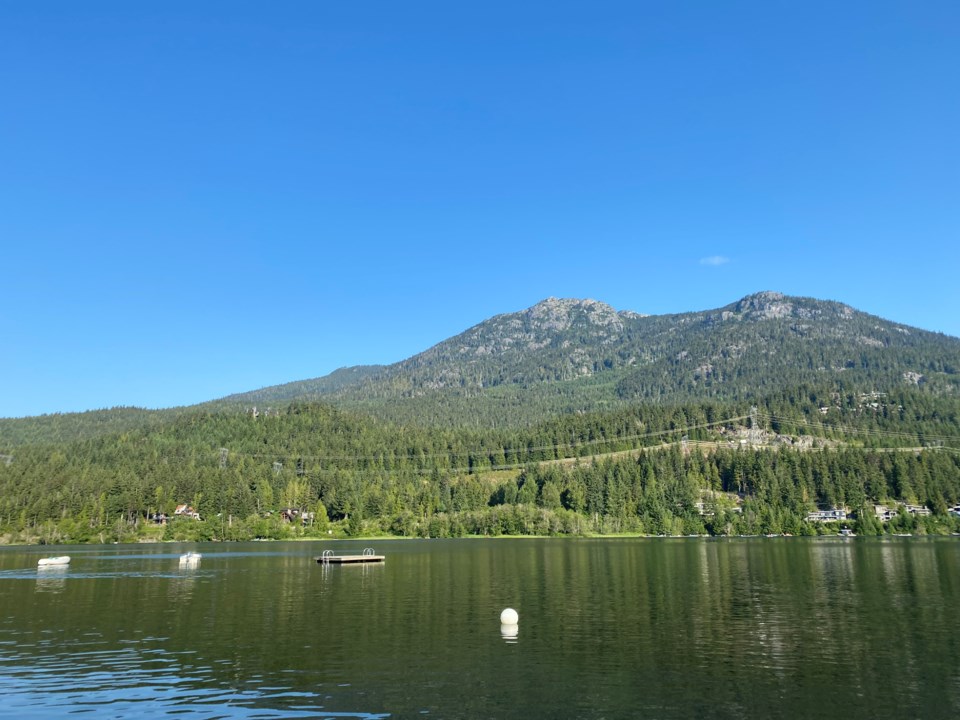This year is already being called the worst wildfire season in Canada’s history—and fire season appears to be just now ramping up in the Resort Municipality of Whistler (RMOW).
In the span of less than 24 hours, from June 26 to June 27, four different fires appeared in the Whistler region on the BC Wildfire Service’s map showing new fires of note.
The first, found southwest of the resort near Carol Creek in the Elaho Valley, close to where the Shovelnose Creek fire started last month, was brought under control before the end of the day on Tuesday, June 27, and never exceeded 0.009 hectares in size.
A second fire was reported on the Lillooet West FSR on the other side of Garibaldi Provincial Park at around the same time, but was removed from the BC Wildfire Service map on June 27.
Then, after a lightning storm rolled through Whistler, two more blazes were reported, this time within municipal boundaries.
One of the fires was just off the end of Stonebridge Drive, near Millar Creek on Mount Sproatt, while the other was found north of Green Lake on 16 Mile Creek.
In all four instances, the fires were suspected to be lightning-caused.
As of Pique’s weekly press deadline on Wednesday, June 28, the two newest fires were “both coming at less than 0.01 hectares,” said Sam Bellion, fire info assistant with the BC Wildfire Service. “We have an initial attack crew and helicopter responding, and given the fire behaviour and resources we’re comfortable that crews will be able to effectively suppress these fires.”
By Thursday morning, both fires were classified as under control.
Meanwhile, a grass fire near Horseshoe Bay on June 26 also hampered traffic on Highway 99, resulting in a northbound detour down the old highway for some drivers.
The fires serve as a timely reminder to stay vigilant in and around Whistler’s forests, as temperatures are expected to spike ahead of the Canada Day long weekend.
Residents and guests to the resort are reminded that a fire ban remains in place for Whistler, despite what may be happening in other jurisdictions.
After several days of lightning, it’s possible more new fires pop up in the days ahead, as sometimes lightning-induced wildfires can smoulder underground for days before truly igniting.
With that in mind, residents should keep their eyes open for new smoke columns, and report all wildfires by calling 1-800-663-5555 toll-free or *5555 on a cell phone.
According to a 2021 survey, 61 per cent of Whistler residents felt the resort is at high risk from wildfire, with the greatest risks coming from human carelessness (53 per cent); climate change (26 per cent); and lightning (16 per cent).
Seventy six per cent of respondents said they support wildfire forest thinning projects on Crown land, and most were aware of community programs like fuel thinning, FireSmart home assessments, and the FireSmart community wood chipper program.
Just over 41 per cent said they do not have a household evacuation plan.
Whistler’s mayor and council adopted a new Community Wildfire Resiliency Plan in April 2022, which includes 32 recommendations to make the community more resilient to wildfire.
“It’s not a question of if we have a fire. It’s more a question of when, which is why we need to have plans for the worst-case scenarios,” said Whistler Councillor Arthur De Jong, at the time. “Out of all the issues and things that I deal with, especially environmentally and public safety, the risk of wildfire is in a league of its own. It is by far our biggest threat.”




